- Home
- H. P. Lovecraft
The New Annotated H. P. Lovecraft Page 2
The New Annotated H. P. Lovecraft Read online
Page 2
The first stages of the Romantic movement, born in the late years of the eighteenth century, produced twin icons of horror: the “scientific monster” and the vampire. Curiously, both emerged from a single night devoted to the telling of stories of horror. In 1816, Dr. John William Polidori accompanied his friend and patient Lord Byron on a trip to Italy and Switzerland. That summer, they stayed at the Villa Diodati, near Lake Geneva, where they were visited by poet Percy Bysshe Shelley, his wife, Mary, and her stepsister, Jane “Claire” Clairmont. When incessant rain kept the five friends indoors, they began reading aloud a book of ghost tales. According to Mary Shelley, Byron suggested that they each write a ghost story to rival those in the book. Her husband wrote nothing in response to the challenge; Byron started on a story but reportedly abandoned it.
Boris Karloff as the monster, in Frankenstein (Universal Studios, 1931).
Mary Shelley’s effort became Frankenstein,* published two years later. The tale of the scientist Victor Frankenstein and his misbegotten creature spawned a number of stage plays, a revised edition in 1831, and eventually countless films, parodies, comic books, radio dramas, and advertising images. Called by some the first science-fiction novel, Frankenstein made icons of the mad scientist and the artificially created monster, who subsequently appeared, sometimes separately, sometimes together, in dozens, if not hundreds, of unrelated tales. Seemingly every schoolchild knows the meaning of a staggering walk with outstretched arms; every filmgoer knows the indelible image of a horrific creature sharing a flower with an innocent child. While Shelley’s book was more a reverie on moral responsibility than a forecast of science gone wrong, generations read it as the ultimate horror tale, a stern warning about the arrogance of humankind.
Another fruit of that famous summer evening, depicted idiosyncratically in Ken Russell’s 1986 film Gothic, was John William Polidori’s The Vampyre, the first popular account of vampirism published in England, in April 1819. Originally heralded as a work of Byron—and then seen as a satire of Byron—the story recounts the activities of the vampire Lord Ruthven, a nobleman marked by his aloof manner and the “deadly hue of his face, which never gained a warmer tint.”7 As the tale begins, the enigmatic yet strangely compelling Ruthven befriends a gentleman named Aubrey, who finds that even Ruthven’s death does not rid him of his deadly companion. When Ruthven returns from death, he rejoins Aubrey, to the latter’s horror, and soon attacks and kills Ianthe, the object of Aubrey’s affections. Plunged into a breakdown, Aubrey recovers only to find that his beloved sister has also become the victim of the creature, who then vanishes.
Dr. John Polidori, author of The Vampyre, by F. G. Gainsford.
Polidori was no great writer, as is evident from the concluding lines of the book: “Lord Ruthven had disappeared, and Aubrey’s sister had glutted the thirst of a VAMPYRE!” His is credited as the first of the great vampire tales, however, primarily for its depiction of a gentleman vampire—a far remove from the disgusting, blood-sucking corpses detailed in the accounts of vampires written by Calmet and other historians. It was immensely successful; within Polidori’s lifetime (he died two years after publication), the work was translated into French, German, Spanish, and Swedish and adapted several times for the stage, playing to horror-struck audiences until the early 1850s.
Melmoth the Wanderer* (1820), an early Romantic work admired by Balzac, Baudelaire, and other prominent mid-nineteenth-century French writers, was written by Charles Robert Maturin, an Irish clergyman and the great-uncle of Oscar Wilde. Its protagonist, John Melmoth, has sold his soul to gain 150 extra years of life and wanders the earth searching for someone to take over this contract. The reader learns the scope and sorrow of his wanderings through the accounts of those whom Melmoth begs to relieve him of his pact. Although the book is convoluted, with numerous tales within tales, Melmoth has been compared to Molière’s Don Juan, Goethe’s Faust, and Byron’s Manfred as a great allegorical figure. Lovecraft called the work “an enormous stride in the evolution of the horror-tale.”
Title page of Varney the Vampire, ca. 1845.
Varney the Vampire, written by James Malcolm Rymer and serialized from 1845 to 1847 in 109 weekly installments in one-cent pulp publications known as “penny dreadfuls,” was the first novel-length account of a vampire in English: “Her bosom heaves, and her limbs tremble, yet she cannot withdraw her eyes from that marble-looking face. . . . With a plunge he seizes her neck in his fang-like teeth—a gush of blood, and a hideous sucking noise follows. The girl has swooned, and the vampire is at his hideous repast!” Despite its artistic shortcomings, Varney delivers a vivid, monstrous portrait of the undead. The vampire is Sir Francis Varney, born in the seventeenth century, frequently reborn from the dead: a “tall gaunt figure” whose face, similar to Ruthven’s, is “perfectly white—perfectly bloodless,” with eyes like “polished tin” and “fearful-looking teeth—projecting like those of some wild animal, hideously, glaringly white, and fang-like.”
Edgar Allan Poe. (Edwin Manchester daguerreotype, 1848)
The tales of Edgar Allan Poe* were mid-nineteenth-century milestones on the trail of the horror story and would significantly influence Lovecraft. Beginning in 1835 with “Berenice,” a dark tale of a man who becomes obsessed by his lover’s teeth, Poe’s stories covered the gamut of science fiction, mystery, and horror. In many of his works, Poe strove to create a “single effect” with a tale, focusing on an intense emotional experience. His narrators seem to seek to rejoin humanity, having been ostracized by an intolerable or inexplicable existence. Poe was widely hailed in Europe, especially after Baudelaire translated his work into French (the translations were published in 1852, 1857, and 1865, after Poe’s death), and achieved the dubious distinction of being one of the first American authors to be better regarded abroad than at home. One of his master poems, “The Raven” (1845), and “The Gold Bug” (1843), a puzzle-story, were immensely popular in America, but he earned little from his writing, and his reputation was unsavory; at his death, he was viewed as depraved, alcoholic, and drug-crazed, which indeed in many ways he was. Although Poe’s writing had a very strong and early influence on him, Lovecraft later felt himself to be burdened by the weight of Poe’s work and reputation, as much of his own early work was deemed Poesque by himself and his friends.8
Illustration from first publication of “Carmilla,” Dark Blue, 1872. (artist: D. H. Friston)
Although Poe’s work was the high-water mark of that century, others continued the horror tradition in subsequent years. Among the many fantasy tales written by the Irish writer Joseph Sheridan Le Fanu* is his highly sensitive “Carmilla” (1872). Building on the works of Polidori and Rymer, it records the history of a female vampire. After a carriage accident, the charming and beautiful Carmilla is taken in by Laura, the narrator, a lonely young woman. Laura experiences terrifying dreams in which a mysterious woman visits her in bed and kisses her neck. Laura discovers that Carmilla is the Countess Mircalla, a vampire. Laura and a band of men exhume Countess Mircalla’s body and destroy her by driving a stake through her heart. The work is important as lesbian literature but even more so for its influence on the vampire tale, focusing, as it does, on the emotions and feelings of the vampire as well as those of the victim.
Cover of 1916 edition of Dracula (London: William Rider & Son).
The end of the nineteenth century saw an explosion of outlets for short stories as reading spread among the middle classes and production of magazines became cheaper. This fin-de-siècle period produced a number of writers fascinated by horror. Arthur Conan Doyle,* Rudyard Kipling,* Oscar Wilde,* Guy de Maupassant,* Henry James,* and Robert Louis Stevenson* all produced numerous stories in the genre. Lesser-known practitioners include E. F. Benson,* M. P. Shiel,* and—one of Lovecraft’s favorites—William Hope Hodgson. The publication, in 1897, of Dracula,* however, was a defining event in horror literature as the century came to a close. Bram Stoker—a theater critic, business manager, and writer of
romantic fiction and minor stories of fantasy and terror—created in Dracula a work so chilling that it set the standard for every subsequent story of creatures of the night. Stoker’s later fantastic tales, including The Jewel of Seven Stars (1903), The Lady of the Shroud (1909), and The Lair of the White Worm (1911), are still read, as are some of the works that benefited from the popularity of Dracula, including, for example, Richard Marsh’s The Beetle (1917) and Sax Rohmer’s Brood of the Witch-Queen (1918). All of these writers would have been known to Lovecraft, and he publicly expressed his admiration of many.
Ambrose Bierce, ca. 1866. (Painting by J. H. E. Partington, 1893)
Among American writers, journalist Ambrose Bierce* (1842–1913), whose short stories Lovecraft called “grim and savage,” is best remembered for “An Occurrence at Owl Creek Bridge” (1891)—one of his Civil War tales strangely echoed in Nikos Kazantzakis’s novel The Last Temptation of Christ (1953) and Martin Scorsese’s 1988 film of the novel—and for The Devil’s Dictionary (1911). While less well known, Bierce’s “The Moonlit Road” (1907) is a very powerful ghost story about passion and revenge, and his visions of horror amid the ordinary had a great influence on Lovecraft.9
Robert W. Chambers, 1903.
By the second half of the nineteenth century, the supernatural had become a common element of popular fiction. The following are only a few of the distinctive supernatural writers of the period. F. Marion Crawford* (1854–1909), son of American sculptor Thomas Crawford and brother of writer Anne Crawford (Baroness Erich von Rabe), was born and raised in Italy and wrote many romances, including mystical tales and ghost stories. He is well known for “The Upper Berth” (1885) and “For the Blood Is the Life” (1905), the latter a classic vampiress tale. Robert W. Chambers, before he took up writing romance novels, produced The King in Yellow* (1895), a series of loosely connected stories about a suppressed book not unlike Lovecraft’s Necronomicon. Chambers’s tale “The Yellow Sign” made a powerful impression on writers like Robert E. Howard and Clark Ashton Smith, who borrowed from its mythology. Another writer noted by Lovecraft was Mary Eleanor Wilkins Freeman* (1852–1930), who was the product of a strict religious upbringing in Massachusetts. She began writing stories as a teenager to help support her family and quickly achieved success, eventually producing more than three dozen volumes of poetry and novels. She married at fifty, an age at which women were generally considered unmarriageable (in the 1920s, the median age for a woman’s first marriage was twenty-one), and continued to work—eventually, at the end of her career, in 1926, becoming the first winner of the William Dean Howells Medal for Distinction in Fiction from the American Academy of Arts and Letters. Lovecraft singled out her story “The Shadows on the Wall” (1902) for praise, and its New England setting must have had a special appeal to him. Charlotte Perkins Gilman, who also published as Charlotte Gilman Stetson (1860–1935), was a prolific author of novels, short stories, and nonfiction, a leading feminist of the day, and the great-niece of Harriet Beecher Stowe, author of Uncle Tom’s Cabin. She suffered postpartum depression following the birth of her only child, Katharine, which inspired her chilling semiautobiographical tale “The Yellow Wall Paper” (1892). A proponent of euthanasia for the terminally ill, Gilman apparently practiced what she preached and committed suicide at the age of seventy-five, three years after receiving a diagnosis of cancer and one year after the death of her second husband. While her outspoken nature and radical lifestyle gave her a special prominence among women, she—like Lovecraft—was ultimately out of step with the times. In particular, her views on sex, racial problems, and immigration, while they may have endeared her to Lovecraft, cost her favor.
Arthur Machen, ca. 1905.
Lord Dunsany, probably ca. 1920.
It is evident from a review of Lovecraft’s library that he read widely in many fields. Certainly, he was well aware of those who came before him, and he openly acknowledged Edgar Allan Poe in particular as his “God of Fiction.”10 Lovecraft’s superb essay “Supernatural Horror in Literature”11 was intended as an objective study of the field but clearly reveals the writers who exerted the greatest influence on his own writing. He named four “modern masters”—Arthur Machen,* Lord Dunsany,* Algernon Blackwood,* and M. R. James*—whose work he greatly admired.12 Arthur Machen (1863–1947) was a prolific Welsh writer of novels and stories. His work suffered from the fallout surrounding the trial of Oscar Wilde; it was seen as part of the same school of decadent horror, and much of it was not widely published until long after. Machen is probably best known for “The Great God Pan” (1890; 1894), which Stephen King called “one of the best horror stories ever written. Maybe the best in the English language.”13 Reminiscent of Frankenstein in telling of an experiment gone horribly wrong, the story mixes science and Roman folklore in an inimitable mystery. Lovecraft absorbed Machen’s introduction of the supernatural amid the ordinary and the idea that old entities still exist amid humankind.
Another of Lovecraft’s “modern masters” was Edward John Moreton Drax Plunkett, 18th Baron of Dunsany, who wrote as Lord Dunsany (1878–1957). Dunsany was a prolific Irish writer of fantastic stories, novels, and plays who published more than sixty books and hundreds of short stories. Today he is probably best remembered for his first collection, The Gods of Pegaˉna (1905)—which described a world unto itself, complete with geography and politics—and The Book of Wonder (1912). Dunsany’s work, and in particular his inventive mythology, exotic visions, and “crystalline singing prose,” in Lovecraft’s words, had a profound influence on Lovecraft and on writers as diverse as Robert E. Howard, Clark Ashton Smith, J. R. R. Tolkien, Jorge Luis Borges, Arthur C. Clarke, Neil Gaiman, and Peter S. Beagle. Lovecraft aped Dunsany’s style and idolized him to the point of writing embarrassingly unreadable poetry about him.14
A writer whose technical abilities dazzled Lovecraft was the English author Algernon Henry Blackwood (1869–1951). Blackwood wrote twelve novels for adults (he also wrote several for children) and more than one hundred weird stories. His most lasting influence is seen in “The Willows” (1907) and “The Wendigo” (1910), both about unseen spirits, and the 1908 John Silence—Physician Extraordinary volume, tales about a psychic detective. Lovecraft applauded his unmatched “skill, seriousness, and minute fidelity with which he records the overtones of strangeness in ordinary things and experiences. . . .”15
Algernon Blackwood.
M. R. James, depicted on one of the “Britons of Distinction” postage stamps issued by the Royal Post in 2013.
Lovecraft also admired Montague Rhodes James (1862–1936), who published as M. R. James. James was an English medieval scholar and provost of Kings College, Cambridge, and is often cited as the greatest ghost-story-teller of the century. The qualities of James’s writing that undoubtedly appealed to Lovecraft were his abandonment of the gothic trappings of his predecessors coupled with his free use of the fruits of his passion for antiquarian studies. James’s best-known stories are “Count Magnus” and “Lost Hearts,” both first published in his collection Ghost Stories of an Antiquary (1904); many of his tales have been broadcast on radio, televised, or filmed. James has been cited as influential by Clark Ashton Smith, John Bellairs, Sir John Betjeman, Stephen King, and contemporary horror writer Ramsey Campbell.
While the genre that Lovecraft labeled “supernatural horror” was fairly well established, science fiction or “scientifiction,” as editor Hugo Gernsback dubbed it in 1926,16 was in its infancy when Lovecraft began writing. Brian W. Aldiss, in his monumental Trillion Year Spree: The History of Science Fiction (1986), counts Shelley’s Frankenstein and some of Poe’s stories—for example, The Narrative of Arthur Gordon Pym* (1836), well known to Lovecraft—as its progenitors. Aldiss labels as “honourable ancestors” Thomas More (Utopia, 1516); Cyrano de Bergerac (L’Autre Monde: ou les États et Empires de la Lune [The Other World: or the States and Empires of the Moon], 1657, and Les États et Empires du Soleil [The States and Empires of the Sun], 1662
); Margaret Cavendish (The Blazing World, 1666); Jonathan Swift (Gulliver’s Travels,* 1726; the author’s preferred edition appeared in 1735); and Voltaire* (“Micromégas,” 1752).
The first commercial success in the new genre was achieved by Jules Verne* (1828–1905), who claimed that he invented science fiction (though he did not term it as such), and his successes (including, most famously, Journey to the Center of the Earth, 1864; From the Earth to the Moon, 1865; and Twenty Thousand Leagues Under the Sea, 1870) did not go unnoticed. Lovecraft certainly knew that speculative fiction had flourished in the years immediately before his birth, and that among the works that had exerted far-reaching influence were Bulwer-Lytton’s The Coming Race* (1871); Erewhon, by Samuel Butler (1872); Flatland—A Romance of Many Dimensions, by Edwin A. Abbott (1884); Robert Louis Stevenson’s The Strange Case of Dr. Jekyll and Mr. Hyde (1886); A Crystal Age, by W. H. Hudson (1887); Albert Robida’s War in the Twentieth Century (1887); and The Great War in England in 1897 (1893), by William Le Queux. Lovecraft scholar T. R. Livesey17 points out that several of Lovecraft’s stories, notably “The Dunwich Horror” and “The Shadow over Innsmouth,” fall squarely in the tradition of the genre of science-fictional accounts of invasions that began with The Battle of Dorking (1871), written by George Tomkyns Chesney, a former lieutenant colonel in the Bengal Engineers, and published anonymously.

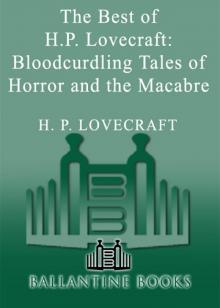 The Best of H.P. Lovecraft
The Best of H.P. Lovecraft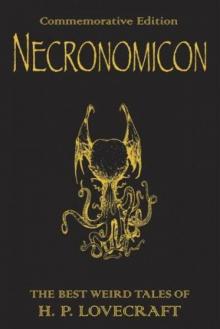 The Definitive H.P. Lovecraft: 67 Tales Of Horror In One Volume
The Definitive H.P. Lovecraft: 67 Tales Of Horror In One Volume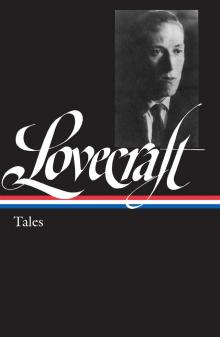 The Complete Works of H.P. Lovecraft
The Complete Works of H.P. Lovecraft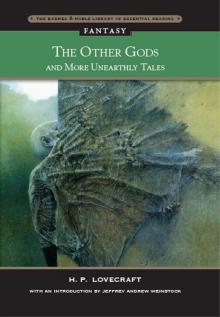 Other Gods and More Unearthly Tales
Other Gods and More Unearthly Tales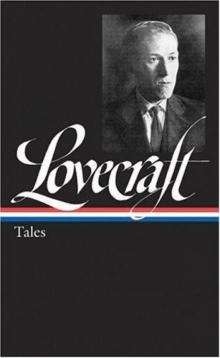 Lovecraft's Fiction Volume I, 1905-1925
Lovecraft's Fiction Volume I, 1905-1925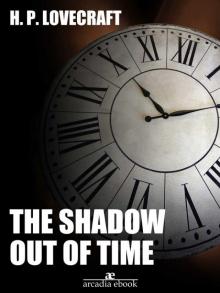 The Shadow Out of Time
The Shadow Out of Time The Shunned House
The Shunned House Lovecraft's Fiction Volume II, 1926-1928
Lovecraft's Fiction Volume II, 1926-1928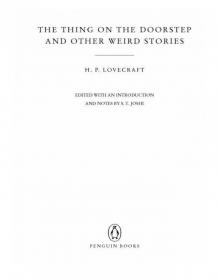 The Thing on the Doorstep and Other Weird Stories
The Thing on the Doorstep and Other Weird Stories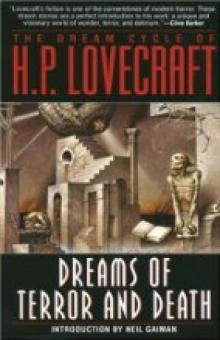 Dream Cycle of H. P. Lovecraft: Dreams of Terror and Death
Dream Cycle of H. P. Lovecraft: Dreams of Terror and Death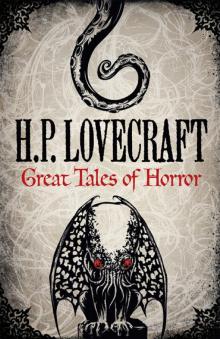 Great Tales of Horror
Great Tales of Horror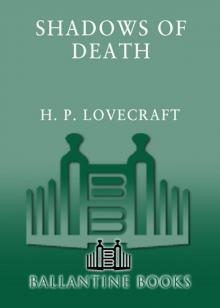 Shadows of Death
Shadows of Death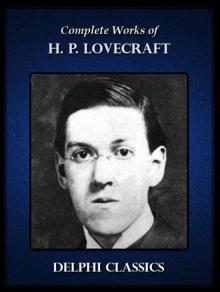 Delphi Complete Works of H. P. Lovecraft (Illustrated)
Delphi Complete Works of H. P. Lovecraft (Illustrated)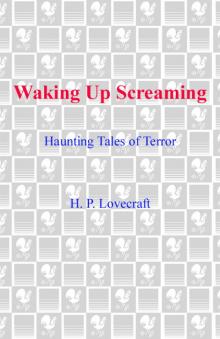 Waking Up Screaming: Haunting Tales of Terror
Waking Up Screaming: Haunting Tales of Terror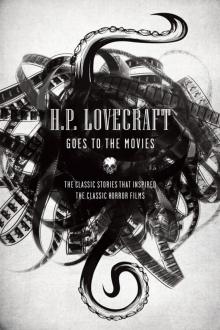 H.P. Lovecraft Goes to the Movies
H.P. Lovecraft Goes to the Movies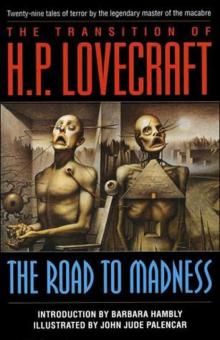 The Road to Madness
The Road to Madness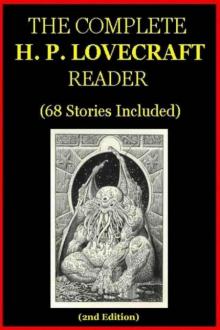 The Complete H.P. Lovecraft Reader (68 Stories)
The Complete H.P. Lovecraft Reader (68 Stories)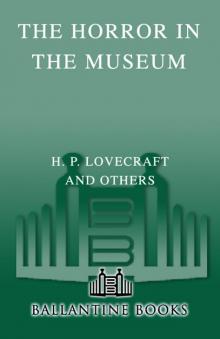 The Horror in the Museum
The Horror in the Museum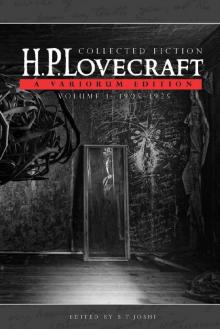 Collected Fiction Volume 1 (1905-1925): A Variorum Edition
Collected Fiction Volume 1 (1905-1925): A Variorum Edition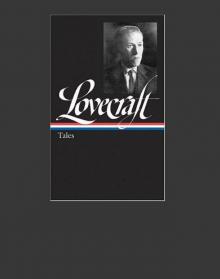 Lovecrafts_Fiction, vol.I_1905-1925
Lovecrafts_Fiction, vol.I_1905-1925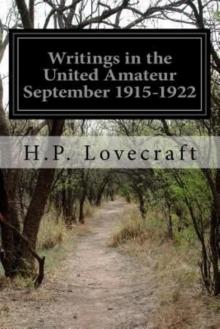 Writings in the United Amateur, 1915-1922
Writings in the United Amateur, 1915-1922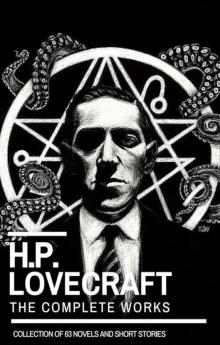 H.P. Lovecraft: The Complete Works
H.P. Lovecraft: The Complete Works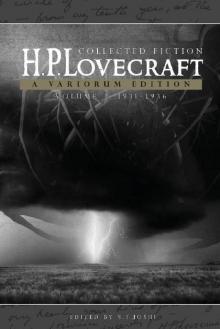 Collected Fiction Volume 3 (1931-1936): A Variorum Edition
Collected Fiction Volume 3 (1931-1936): A Variorum Edition H.P. Lovecraft: The Complete Fiction
H.P. Lovecraft: The Complete Fiction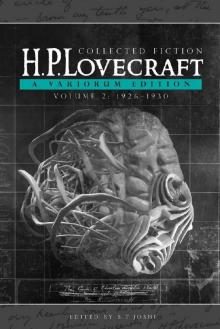 Collected Fiction Volume 2 (1926-1930): A Variorum Edition
Collected Fiction Volume 2 (1926-1930): A Variorum Edition Yog Sothothery - The Definitive H.P. Lovecraft Anthology
Yog Sothothery - The Definitive H.P. Lovecraft Anthology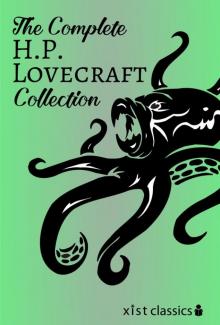 The Complete H.P. Lovecraft Collection (Xist Classics)
The Complete H.P. Lovecraft Collection (Xist Classics)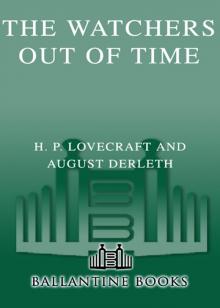 The Watchers Out of Time
The Watchers Out of Time Eldritch Tales
Eldritch Tales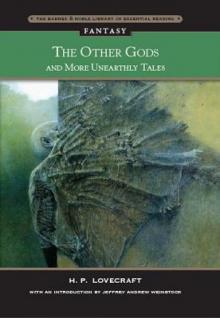 The Other Gods And More Unearthly Tales
The Other Gods And More Unearthly Tales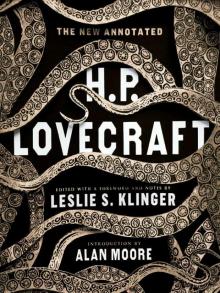 The New Annotated H. P. Lovecraft
The New Annotated H. P. Lovecraft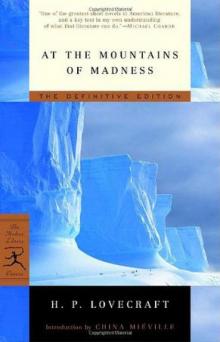 At the mountains of madness
At the mountains of madness Bloodcurdling Tales of Horror and the Macabre
Bloodcurdling Tales of Horror and the Macabre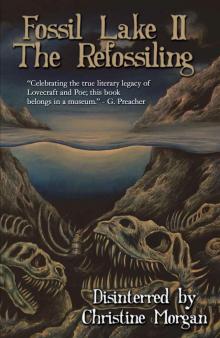 Fossil Lake II: The Refossiling
Fossil Lake II: The Refossiling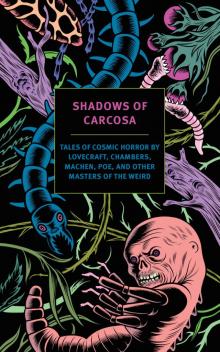 Shadows of Carcosa: Tales of Cosmic Horror by Lovecraft, Chambers, Machen, Poe, and Other Masters of the Weird
Shadows of Carcosa: Tales of Cosmic Horror by Lovecraft, Chambers, Machen, Poe, and Other Masters of the Weird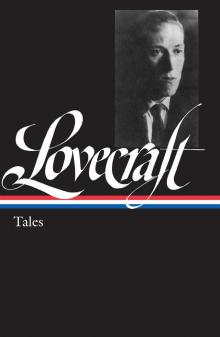 H. P. Lovecraft
H. P. Lovecraft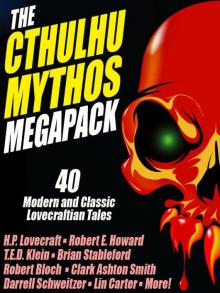 The Cthulhu Mythos Megapack
The Cthulhu Mythos Megapack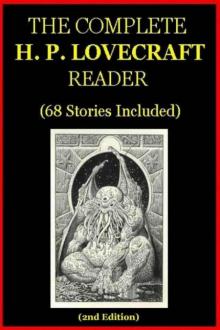 The Complete H. P. Lovecraft Reader (2nd Edition)
The Complete H. P. Lovecraft Reader (2nd Edition)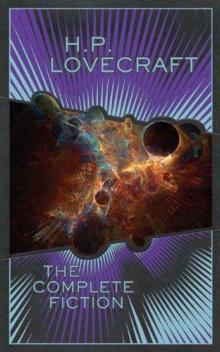 The Complete Fiction
The Complete Fiction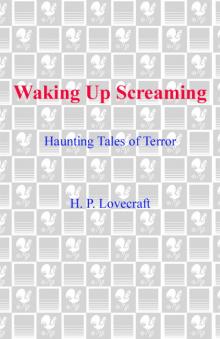 Waking Up Screaming
Waking Up Screaming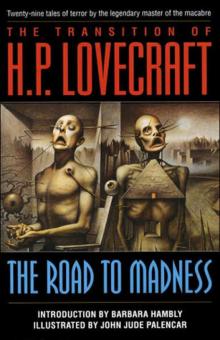 Transition of H. P. Lovecraft
Transition of H. P. Lovecraft![[1935] The Shadow Out of Time Read online](http://i1.bookreadfree.com/i2/04/12/1935_the_shadow_out_of_time_preview.jpg) [1935] The Shadow Out of Time
[1935] The Shadow Out of Time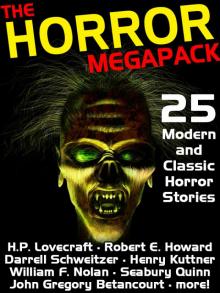 The Horror Megapack
The Horror Megapack